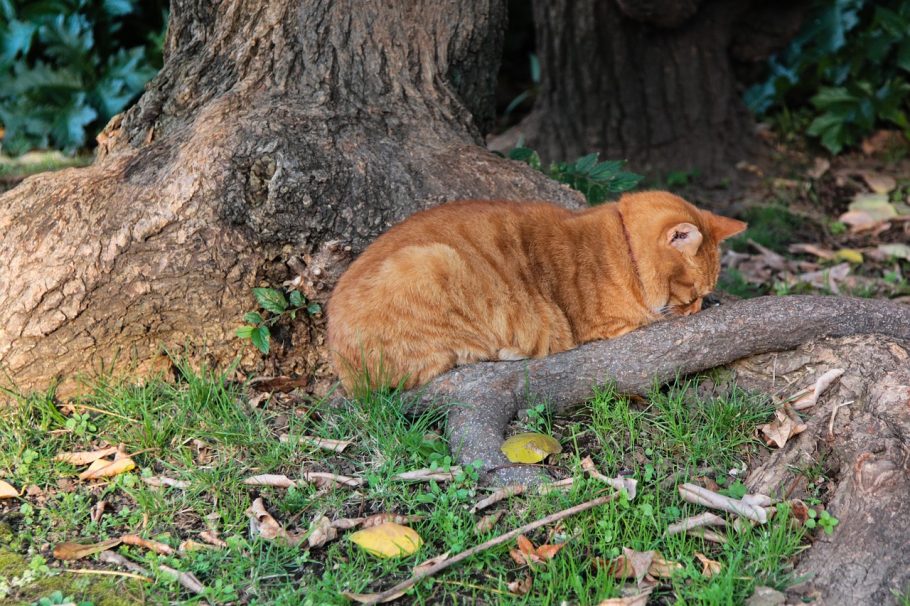Cats are fascinating creatures with many interesting and surprising facts to learn about. For instance, did you know that cats are well-suited to life in the desert? Their kidneys are highly efficient at conserving water, and they’re able to conserve even more by urinating less frequently and in smaller quantities. Additionally, cats are highly adaptable to hot temperatures and are capable of panting to cool themselves off. It’s incredible how these abilities have helped cats survive in harsh desert environments for thousands of years. There’s so much more to discover about these amazing animals, so keep reading for more fun feline facts!
Cats Can’t Taste Sweetness
Unlike humans and other mammals, cats can’t taste sweetness. This is because they lack the genetic mechanism for detecting sweet flavors. However, cats have a highly sensitive sense of smell and can detect a wide range of odors.
Did you know that cats are not capable of tasting sweetness? While humans and other mammals can taste sweet flavors, cats lack the genetic mechanism needed to detect them. Interestingly, their inability to taste sweetness does not affect their dietary needs, as they are obligate carnivores and most of their diet consists of protein and fat.
Although cats cannot taste sweetness, they do have a highly sensitive sense of smell. In fact, their sense of smell is about 14 times stronger than that of humans! This allows them to detect a wide range of odors, which is why they are often used in the detection of drugs, explosives, and even diseases.
In conclusion, while cats may not be able to enjoy the same sweet treats that humans do, they still have an amazing ability to detect and appreciate a wide range of scents. This makes them excellent hunters and valuable allies in sniffing out danger.
Cats Have Better Night Vision Than Humans
Cats have evolved to have large eyes with a high concentration of rods, which are cells in the eye that are especially sensitive to low levels of light. This allows them to see much better in low-light conditions than humans can.
Cats truly have remarkable eyesight, especially when it comes to their ability to see in low-light conditions. Their eyes are adapted to dim light thanks to a high concentration of rods, which are cells in the eye that are especially sensitive to low levels of light. With this adaptation, cats can see up to six times better than humans in the dark and in low-light conditions.
Additionally, cats have a wider field of vision than humans, with an almost 200-degree view. They also have a reflective layer behind their retina called the tapetum lucidum, which acts like a mirror, enhancing the amount of light that enters the eye. This is why cats’ eyes sometimes appear to glow in the dark.
Overall, the feline eye is an amazing example of evolutionary adaptation, allowing cats to be active and successful predators, both day and night.
Cats Can’t See In Total Darkness
While cats do have exceptional night vision, they can’t see in total darkness. They still need some small amount of light in order to see, even if it’s just a little bit.
Cats have exceptional night vision, but that doesn’t mean they can see in complete darkness. They require a small amount of light to see the world around them, even if it’s barely visible. This is because cats’ pupils dilate to allow more light to enter their eyes, but they still need at least some light to make out objects. Even in low-light conditions, cats can only see shades of gray, not colors.
Cats’ night vision is due to a high concentration of rod cells in their eyes, which are more sensitive to light than the cone cells we use to see during the day. This allows them to see in dim lighting that would be impossible for humans. However, in complete darkness, even cats are in the dark!
Cats Can See Ultraviolet Light
In addition to having better night vision than humans, cats can also see in ultraviolet light! This is due to a special component in their eyes called a tapetum lucidum, which reflects light back through the retina to enhance their vision.
Cats are impressive creatures and one of the most fascinating things about them is their ability to see in ultraviolet light. In addition to having better night vision than humans, they are also able to see in UV light! This is possible due to a special component in their eyes called a tapetum lucidum. This structure reflects light back through the retina, enhancing their vision and allowing them to see things that are invisible to the human eye.
While it’s not entirely clear why cats have this ability, it’s believed that it may help them to better detect prey, identify other cats, or navigate their environment. However, it’s worth noting that not all cats have this ability and it seems to be more common in wild or feral cats.
Overall, the ability of cats to see in ultraviolet light is just one more example of the many amazing adaptations that these animals have developed over centuries of evolution.
Cats Have Flexible Backbones
One of the most impressive features of cats is their incredibly flexible backbone. Cats have more vertebrae than any other mammal except for the long-bodied European eel. This allows them to contort their bodies in all kinds of incredible ways!
Cats have a unique skeletal structure that allows them to be incredibly flexible. They have more vertebrae than any other mammal, except for the long-bodied European eel. This enables them to bend, stretch, and contort their bodies in all kinds of impressive ways. Their flexible spine also plays an important role in their hunting skills. Cats use their backbones and powerful muscles to make quick and agile movements when pouncing on prey. In addition, their flexible spine helps them to maintain balance and precision when jumping and climbing.
Interestingly, the flexibility of a cat’s backbone also varies depending on the breed. For example, the Egyptian Mau and the Bengal cat are known to be some of the most flexible breeds of cats, due to their longer and more slender bodies. In contrast, breeds such as the Persian cat may have a less flexible spine due to their shorter and stockier build.
- Flexible backbone is one of the most impressive features of cats
- They have more vertebrae than any other mammal, except for the long-bodied European eel.
- Flexibility helps in hunting, jumping, climbing and maintaining balance and precision.
- The flexibility varies from breed to breed due to their body structure.
Cats Can Right Themselves In Midair
Another amazing ability that cats have is the ability to right themselves in midair. If a cat falls from a high place, they are often able to twist their body around and land on their feet!
Cats are truly impressive animals, and one of their most fascinating abilities is their knack for righting themselves in midair. If a cat falls from a high place, they are often able to twist their body around and land on their feet. This is due to several factors, including their flexible spine, powerful leg muscles, and keen sense of balance.
When a cat falls, they quickly orient their body to face the ground and spread their legs out in preparation for landing. Then, they use their powerful leg muscles to absorb the impact of the landing and minimize the shock to their body. This impressive ability has earned cats a reputation for being able to survive falls from great heights.
It’s important to note, however, that not all falls are survivable for cats. Falls from extreme heights or onto hard surfaces can still result in serious injuries or even death. So, while cats may have an amazing talent for righting themselves in midair, it’s still important to keep them safe and supervise them at all times.
Cats Have a Special Collar Bone
Cats also have a unique collar bone that allows them to squeeze through small spaces. Unlike most mammals, who have a solid collar bone, cats have a loosely attached collar bone that can move independently. This allows them to contort their bodies and slip through tight spaces with ease!
Cats are known for their agility and flexibility, and one of the reasons behind this impressive attribute is their special collar bone. Unlike most mammals who have a solid collar bone, cats have a loosely attached collar bone that can move independently. This unique feature allows cats to contort their bodies and slip through tight spaces with ease.
Whether it’s squeezing through a narrow gap in a fence or maneuvering through a cramped space in the house, cats are able to do so effortlessly, thanks to their flexible collar bone. This feature also enables them to climb trees and jump from one surface to another without getting injured.
Scientists believe that this adaptation in cats developed over time due to their hunting and predatory instincts. Cats needed to be able to navigate through small spaces to hunt down their prey and escape from predators, and their flexible collar bone provided them with the necessary agility.
So, the next time you see your cat slip through a narrow space that seems impossible to navigate, remember that it’s all thanks to their special collar bone!




